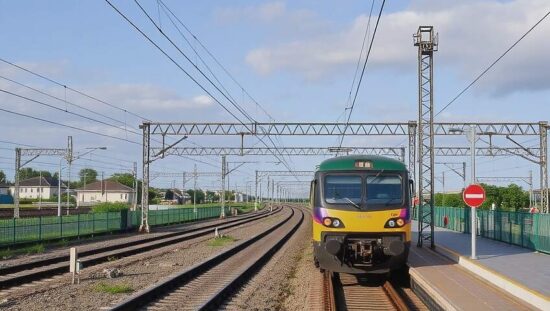A recent study conducted by the Ifo Institute, a renowned research institution, has revealed that the additional billions provided by the German federal government to the railway system over the past years have not significantly accelerated the renovation of the rail network. Instead, these funds have primarily driven up the prices of the construction and railway industries. This finding is particularly alarming, given that the railway company is currently seeking 148 billion euros from the federal government’s infrastructure special fund, which accounts for three-quarters of the total sum. The study, which was reported in the “Tagesspiegel” newspaper, analyzed the railway company’s annual reports to assess the number of primary investments made in tracks, switches, bridges and overhead lines between 2006 and 2024. The results showed that the amount of material used increased by only about 21% between 2011 and 2024. However, the federal government and the railway subsidiary, DB InfraGO, invested more than four times the amount in the same period compared to 2011.
According to Felix Berschin, a railway expert, the costs of railway construction have increased almost twice as much as those of road construction. This conclusion is based on comparisons with corresponding construction cost indexes. The cost explosion cannot be attributed to the general inflation of construction costs following the COVID-19 pandemic and the war in Ukraine.
Berschin points out that the construction of new signaling systems and bridges became significantly more expensive as early as 2018. This was due to the growing emphasis on climate protection debates, which led the government to allocate more funds to the railway company. However, between 2010 and 2018, construction costs increased by only 25%.
Berschin suggests that the railway and construction industries have likely taken advantage of the increased state investments to maximize their profits, particularly in the area of signaling technology, where there are only two major players in Germany: Siemens and Hitachi. These findings raise concerns about the efficiency and effectiveness of the federal government’s investments in the railway sector. There is a need for closer scrutiny and evaluation of the allocation and utilization of these funds to ensure that they are being used in a manner that benefits the railway system as a whole and meets the growing demands for improved infrastructure and services. This will require a comprehensive review of the railway industry’s pricing structures, procurement practices and overall management to identify any inefficiencies or areas of improvement. Ultimately, the goal should be to strike a balance between providing sufficient funding to support the necessary renovations and ensuring that the funds are used wisely and responsibly to achieve maximum benefits for the railway system and the public it serves.





